Spiral Groove SG-2 Turntable (originally featured in issue 19)
I loved the ending of the first Iron Man movie, when Tony Stark declares in the press conference, “Yeah, I’m Iron Man,” and the crowd goes wild. While it might not drive a press conference into frenzy, I’m going to tip my hat right now and tell you that the SG-2 is a fantastic turntable. There’s still a few high rollers on the list that I haven’t experienced yet, such as the SME30 (which I have heard a number of times but not in my system), and a few others in the $100K and higher category. But let’s face it, most of us aren’t buying 100 thousand dollar turntables. Even a five-figure table such as the SG-2 is a luxury, but one that some of us can afford. For the price of a tricked-out WaveRunner, you can have analog bliss. I know which I’d rather have.
When I first heard the flagship SG-1 at the Immedia offices, I was immediately impressed. Fortunately, designer Allen Perkins had a complement of gear in his listening room with which I am familiar, so it wasn’t just a bunch of audio parlor tricks; this is a very musical sounding table. The main differences between the $25k SG-1 and the $15k SG-2 are that the SG-1 uses a few more exotic materials in the plinth; stainless steel in the SG-1 is replaced with aluminum in the SG-2. The SG-1 weighs 70 pounds, while the SG-2 is only 50. Both tables feature the same motor, speed control/power supply and bearing, along with a finely machined record clamp. The material making up the platter is the same in both tables, but the outer ring in the SG-1 is stainless, where the SG-2’s is aluminum.
The SG-1 features a removable armboard that bayonets out like an SLR camera lens. Perkins told me that this was inspired by his Leica cameras and made in house by SG. This feature allows multiple tonearm configurations as the mood strikes, while the SG-2 has a standard, albeit removable armboard. Sharing Allen Perkins’ passion for photography, I thought this was an exquisite touch. Retail price for the Spiral Groove SG-2 without arm is $15,000, while the current Tri-Planar mk. VII is $5,500. Come on, this is way more interesting than a WaveRunner and you don’t need a wetsuit to use it.
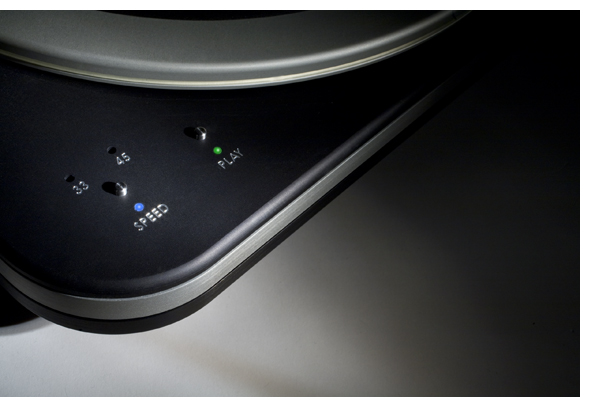 Every surface on the SG-2 is beautifully finished, and as far as tables go, I put it up on par with the SME’s in terms of build quality and understated excellence. The Continuum is a Dodge Challenger with a blower sticking out of the hood, jacked up with tires about three sizes too big sticking out of the wheel wells, while the SG-2 is an Audi S8 — elegant, understated and much more capable the minute you get into the first turn. Should you be someone who wants a turntable based on the high zoot factor, the SG-2 may not be for you. But if your primary measuring stick is musical performance, and timeless style like an Eames Chair, read on.
Every surface on the SG-2 is beautifully finished, and as far as tables go, I put it up on par with the SME’s in terms of build quality and understated excellence. The Continuum is a Dodge Challenger with a blower sticking out of the hood, jacked up with tires about three sizes too big sticking out of the wheel wells, while the SG-2 is an Audi S8 — elegant, understated and much more capable the minute you get into the first turn. Should you be someone who wants a turntable based on the high zoot factor, the SG-2 may not be for you. But if your primary measuring stick is musical performance, and timeless style like an Eames Chair, read on.
Getting out of my comfort zone
Most of my recent analog experience has been with SME and Rega tonearms, but Perkins suggested that my current reference, the iV.Vi would not be a mechanical fit for the SG-2 or the SG-1. “There’s nothing wrong with the SME arm, it’s just the oval-shaped base that the SME mount uses is too big to work with the oversized platter on the Spiral Groove tables; the pivot to spindle distance would be too great. The 12-inch SME arms, would probably work just fine, though.” I’m guessing this also will eliminate the Graham arms as possible contenders. Perkins should have his arm complete soon, which he was quite excited about offering as the perfect match with the SG tables. As fate would have it, the arm would take longer to reach the market, but the analog cohorts I know that have used the arm assure me it is fantastic.
So for now, we went with the Tri-Planar mk. VIII. I’ve always been intrigued with the Tri-Planar, and this provided an excellent opportunity to break some new ground. One of the virtues of the Tri-Planar is its almost infinite adjustability, which can be a blessing for some and maddening for others, who may feel they have never gotten it just right.
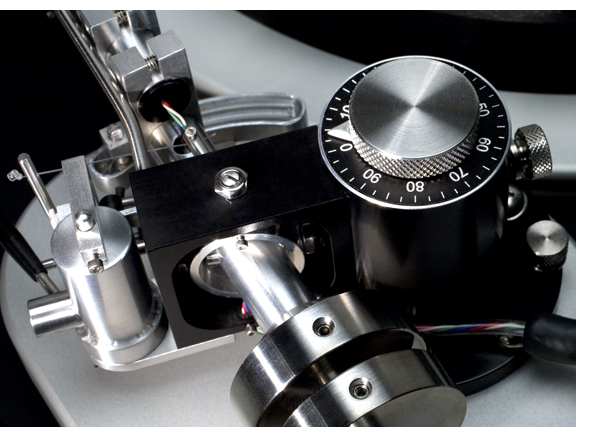 If you have some records of varying thickness, the Tri-Planar is quite handy, with its large dial indicator on the back of the arm. You can find settings for 140, 180 and 200-gram records, with a little practice, and then return to those settings when you play those records again. Or, if you are like me, you can just set the arm up for whatever you have the most of and go from there. I’m of the mind that constant fiddling is bad for the cartridge suspension, and as I seem to get long life out of my cartridges, I might be on to something. The good news is that with the Tri-Planar, you can have it your way.
If you have some records of varying thickness, the Tri-Planar is quite handy, with its large dial indicator on the back of the arm. You can find settings for 140, 180 and 200-gram records, with a little practice, and then return to those settings when you play those records again. Or, if you are like me, you can just set the arm up for whatever you have the most of and go from there. I’m of the mind that constant fiddling is bad for the cartridge suspension, and as I seem to get long life out of my cartridges, I might be on to something. The good news is that with the Tri-Planar, you can have it your way.
Incredibly easy setup
I’m a huge fan of Rega and SME because they are easy to set up and once set up, tend to stay that way. The SG-2 is a marvel of simplicity and after carefully unpacking the table along with its external power supply, I merely had to remove a few spacers holding the platter up off the base and I was ready to mount the arm. Underneath the plinth is a set of three cone-shaped feet that in addition to damping vibration make it easy to level the SG-2. Add the SG-2 to the “easy to set up” category.
A newcomer to the Tri-Planar back then, it took about an hour and a half to complete initial setup with the help of my Acoustic Sounds test record, Acoustic Sounds protractor and trusty Fluke Multimeter. Fortunately for me, the SG-2’s speed was spot on right out of the box, saving another step. Fine tuning the Lyra Skala took about another hour of careful listening, and I ended up settling on a final tracking weight of 1.62 grams, a bit on the light side as the data sheet suggests 1.65-1.75 grams.
I zeroed in on the Skala for the review period because it has a sound I am very familiar with and I happen to have a pair of them. This always makes it easy to perform a direct comparison between my reference Raven Two turntable with an SME iV.Vi and whatever else I’m evaluating. I was able to keep everything else the same except for tonearm cables. The Tri-Planar comes with its own cable, so there may have been a slight difference between it and the Furutech cables I normally use on my other tonearms. Regardless, it was easy to get a good feel for the inherent differences between the Raven/SME combination and the SG-2/Tri-Planar combination.
To investigate a few other possibly good combinations, I also had excellent luck with my other reference cartridges, the Dynavector XV-1s and the Grado Statement. I would also like to mention that the combination of the SG-2 and the Tri-Planar has offered the best performance the Grado has ever exhibited in my system.
My initial comparisons were with the Nagra VPS phono stage, and once I had a good feel for the combination, I also used the SG-2/Tri-Planar/Skala combination to evaluate the stellar Naim Stageline phono preamplifier with the HighCap2 and SuperCap power supplies, but that’s for another review.
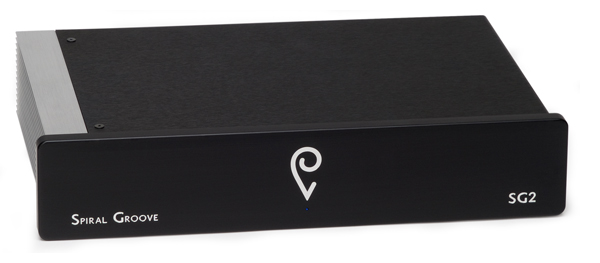 This is what analog is all about folks
This is what analog is all about folks
I might be a little crazy, but I believe great analog should sound really analogy. Smooth and natural (not rounded off) with an organic sound that is convincingly realistic enough that on the right recording, it takes you to that place where you get fooled into thinking the musicians are actually playing in your listening room. I understand that you can’t put a full symphony orchestra or Snow Patrol with a wall of Marshall amps in your living room. But you can get damn close with a solo vocalist, a small string quartet or a few musicians playing acoustic instruments if your room and system are up to the task.
If you are a newcomer to the world of analog, you might not realize just how difficult this balance is to achieve. I’ve been chasing it for decades. While thousands of pages have been written trying to describe this, if you have listened to your fair share of music, you know instantly when it’s right, yet it can drive you to madness when it’s not. Even at the beginning of the setup phase, the minute I lowered the tonearm onto the record I knew the SG-2 was an analog gem. It just got better as the final adjustments were made.
This may not be scientific, but the SG-2 was one of those rare components that would not allow me to do any multitasking whatsoever. Whenever I put a record on this table and tried to work at the same time, I just couldn’t do it. I’d shut my laptop and hours would go by, playing one record after another and pretty soon, the better part of the day had evaporated before my eyes.
So much of achieving this rightness has to do with timbral accuracy, while part of it is the ability of a turntable, arm and cartridge to achieve high resolution without harshness. The mechanical aspects of a turntable at this level also are a major contributor to the dynamic range of the analog system, going hand in hand with the resolution aspect. The more unobtrusive the table becomes, the more it can get out of the way and reveal the music present on the discs being played.
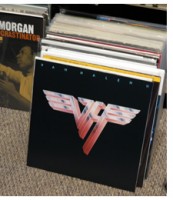 Keeping it real
Keeping it real
Rather than go on and on about different records that I played, let’s suffice to say I played a lot of them. Here’s what I feel are the most important points about this fine record playing system:
First, nuance. It is always a great experience to listen to your favorite records and hear small details that weren’t present before, or as clear. The SG-2 was a master of this, whether offering up a little more texture as a bow was drawn across the violin strings, or revealing more echo at the end of Black Sabbath’s “Iron Man.” No matter what kind of music you enjoy, this will grab you immediately with an SG-2. Perkins feels that the detail his tables offer has much to do with the platter design and the materials used, forming an excellent record-to-platter interface.
Next, quiet. Thanks to a well-designed drive system, the SG-2 could form the textbook definition of the classic audiophile cliché, “velvety black backgrounds.” Not a molecule of rumble or other mechanical noise, which gives you CD quiet out of your highest quality pressings. The bearing in the SG-2 is not directly attached to the spindle, an approach taken by only a few other tables.
Big sound. Did I say big? I meant HUGE. As I’ve mentioned in past articles, I tend to listen to music spatially and interpret the sound field that my system produces as a cube. My Raven Two produces a very large sound field, but moving to the SG-2, the sound field expanded in all three dimensions. If you’ve ever had the opportunity to listen to a properly setup pair of MBL speakers in a good room, it feels as if someone poured out a room full of sound and you can just concentrate on the music.
According to most engineers I’ve spoken with, a big part of that big sound comes from drive accuracy and stability. The oversized platters on the SG-1 and SG-2 help reduce mechanical error, and the extra mass helps maintain inertia, smoothing things out further.
It’s like comparing Kodachrome with Ektachrome. The Continuum has more contrast, like Ektachrome, which grabs you at first and feels like a lot of fun. Some might even prefer its presentation. But like Kodachrome, my favorite film, the SG-2 has a tonality that just goes on forever. Acoustic instruments have the perfect amount of texture; drumheads sound correct, piano decay sounds correct, with the proper attack, decay and most of all, texture, with nothing muffled or truncated.
The bonus here is the SG-2’s amazing resolution, another Kodachrome hallmark. Some gear that I’ve heard that is wonderfully tuneful does it at the expense of resolution; not so with this table. For those who have amazing record collections, consisting of early edition pressings and high-quality audiophile remasters, you will really be in for a treat. Again, the Skala cartridge seemed to be a phenomenal match for this arm-and-table combination, with the Dynavector right behind.
I won’t use the B-word, but…
Back in issue 19 when I originally reviewed The Spiral Groove SG-2, I found this table one of the most musically involving tables I’d heard at the time and not only purchased the review sample, but lived with it happily for three years. It’s audio performance is top notch, build quality exquisite, and it is aesthetically elegant. The kicker is that this is truly an affordable reference. Not in a Rega P3 kind of way, mind you, but if you are a music lover/collector/audiophile that has been at this for a while and are looking for a statement table that doesn’t cost as much as a Porsche, the SG-2 should be at the top of your audition list.
Now that the Spiral Groove tonearm is available, we look forward to revisiting this great table again very soon.
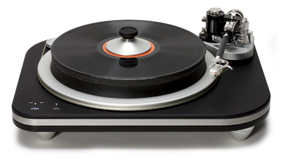
The Spiral Groove SG-2 Turntable
MSRP: $15,000 (without arm), Tri-Planar Mk. VII, $4,700
Manufacturers Information:
Spiral Groove, distributed by Immedia
Peripherals
Preamplifier Conrad Johnson ACT2/series 2
Power Amplifier Conrad Johnson Premier 350
Phono Preamplifiers Nagra VPS, Naim Superline with SuperCap power supply
Cartridges Dynavector XV-1s, Lyra Skala, Lyra Olympos, Grado Statement
Speakers MartinLogan CLX with (2)Descent i subwoofers



